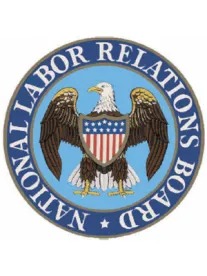In a departure from more than a decade-long precedent, the National Labor Relations Board has held that Board-conducted representation elections in bargaining units combining employees who are (a) jointly employed by a user employer and supplier employer and (b) solely employed by the user employer do not require the consent of either employer. Miller & Anderson, Inc., 364 NLRB No. 39 (July 11, 2016).
In so doing, the NLRB overturned its 2004 decision in Oakwood Care Center, 343 NLRB 659, and reinstated its earlier decision in M.B. Sturgis, 331 NLRB 1298 (2000).
Miller & Anderson is a significant decision for companies that use contingent workers.
Background
Miller & Anderson employed sheet metal workers at a construction project in Franklin County, Pennsylvania. Miller & Anderson contracted with Tradesmen International to provide Miller & Anderson with sheet metal workers to perform services at the Franklin County project. None of the employees at the site were represented by a union.
The Sheet Metal Workers International Association, Local Union No. 19, filed a representation petition at the NLRB’s Regional Office seeking to represent a bargaining unit consisting of both Miller & Anderson’s direct employees and the Tradesmen employees who were assigned to the Franklin County project. Both Miller & Anderson and Tradesmen, however, declined to consent to this combined unit, as required byOakwood. Accordingly, the Regional Director dismissed the representation petition. On May 18, 2015, the Board granted the union’s “request for review” of the Regional Director’s decision.
Majority Decision
Overturning Oakwood, the Board decided “[e]mployer consent is not necessary for units that combine jointly employed and solely employed employees of a single user employer.” Instead, the Board held that such bargaining units would be appropriate without consent as long as the jointly employed employees shared a “community of interest” with the employees who were employed solely by the user employer (in this case, Miller & Anderson).
The Board majority engaged in a lengthy review of the shifting case law on the issue. In the Board’s view, it had consistently upheld “units combining employees solely employed by a user employer and employees jointly employed by that same user employer and a supplier employer” without requiring consent until 1990, when the Board’s treatment of units combining jointly employed and solely employed user employees “abruptly changed,” interposing a consent requirement in Lee Hospital, 300 NLRB 947 (1990). The law remained that way until 2000 when, in M. B. Sturgis, Inc., 331 NLRB 1298 (2000), the Board held that employer consent was not required. Four years later, in Oakwood Care Center, the Board reversed course again and re-imposed the consent requirement. In Miller & Anderson, the Board returned to the standard articulated in Sturgis.
As it had in Browning-Ferris Industries of California, Inc., 362 No. 186 (2015) (on the standard for determining joint employer status), the Board in Miller & Anderson stated that it wanted to expand employees’ access to collective bargaining as a matter of policy. The Board commented, “Our national labor policy ‘has been built on the premise that by pooling their economic strength and acting through a labor organization freely chosen by the majority, the employees of an appropriate unit had have the most effective means of bargaining for improvements in wages, hours, and working conditions.’” The Oakwood rule, requiring employer consent, diminished the bargaining power of employees and was especially problematic given the rise in numbers of contingent workers. “These deleterious effects of the Oakwood rule requiring employer consent are all the more troubling because of changes in the American economy over the last several decades,” the Board said.
Dissent
In a lengthy dissent, Member Philip Miscimarra disagreed with the majority’s recounting of prior case law. The dissent further focused on the practical difficulties associated with bargaining in situations where the user employer is the joint employer of all the members of a bargaining unit, but the supplier employer employs only a portion of the bargaining unit. In response, the Board majority dismissed this argument as “unconvincing, because the potential for such disputes could be said to exist in every case involving joint employer bargaining [involving more than one entity], which has long been sanctioned by the Board and the courts.” Notably, the Board held that the supplier employer (in this case, Tradesmen) is not required to engage in bargaining for the entire unit. Rather, the supplier employer “must bargain only as to those unit members whom it employs.”
The Board’s decision is a significant change, albeit one that is an expected outgrowth of the new joint employer standard implemented in Browning-Ferris. By permitting employees in the user/supplier context to seek an NLRB election in their bargaining unit without the consent of their employers, the Board has made it easier for unions to organize workplaces that employ a significant number of contingent workers.







 />i
/>i

